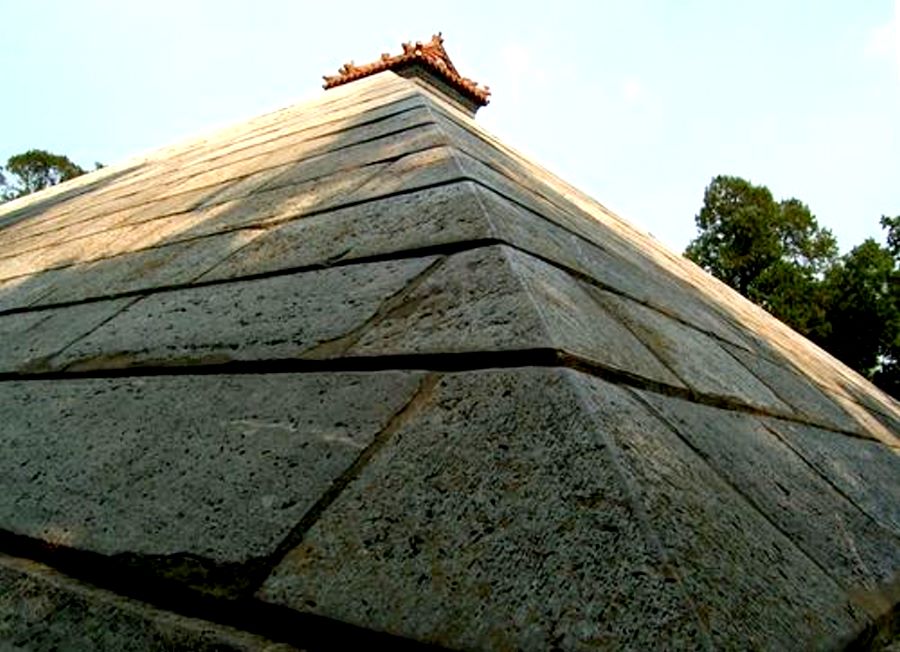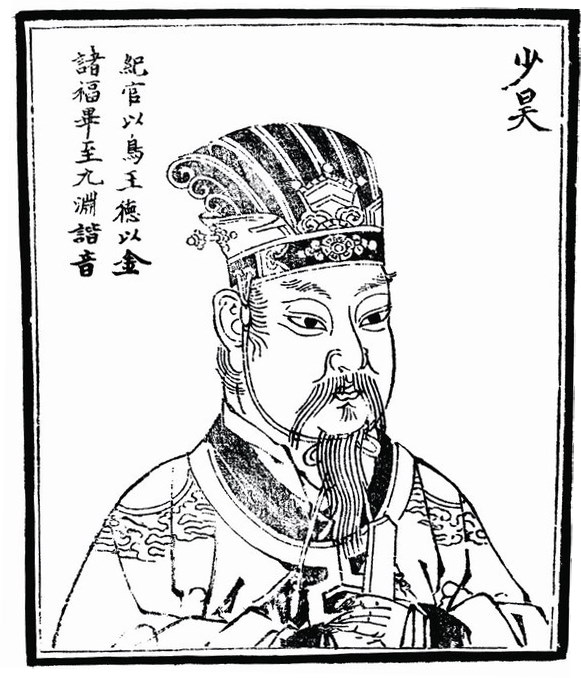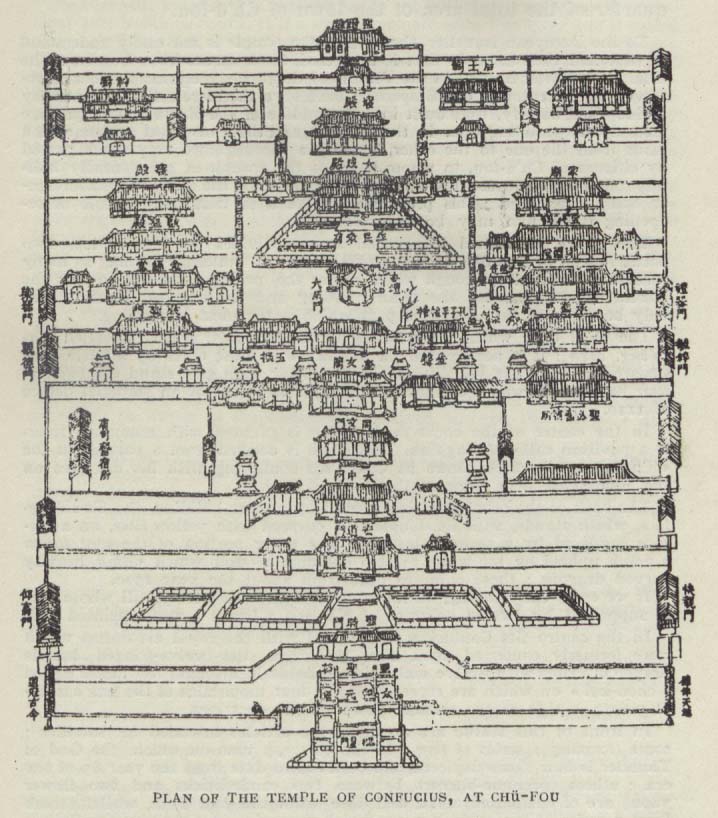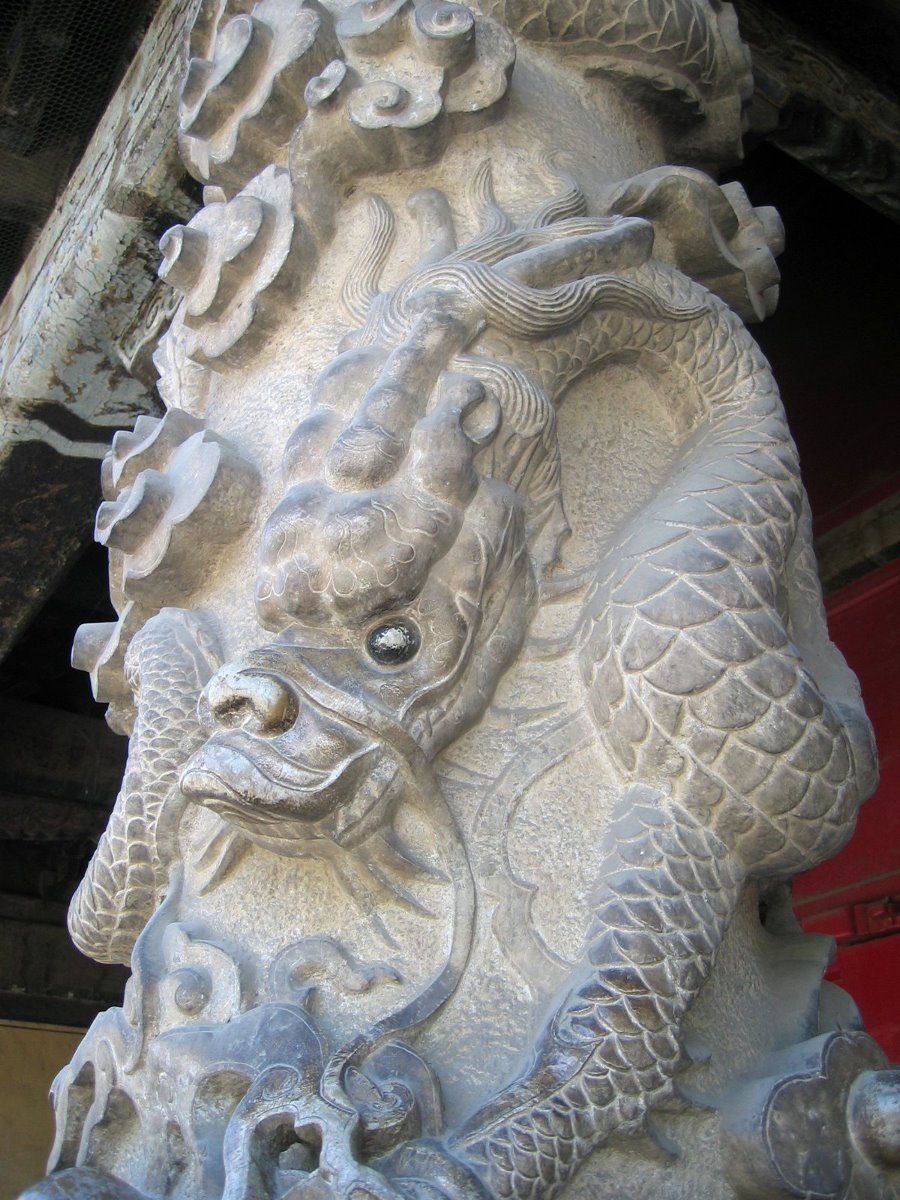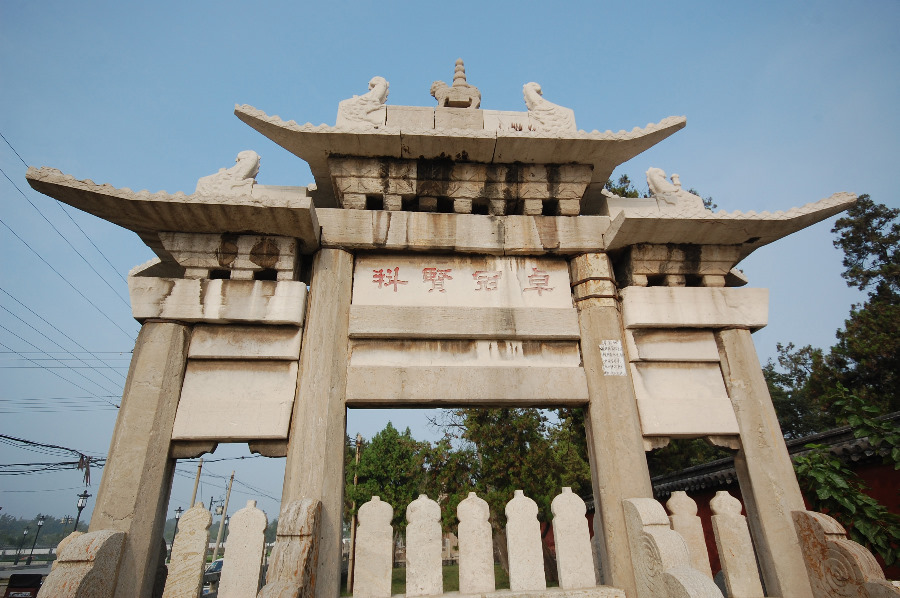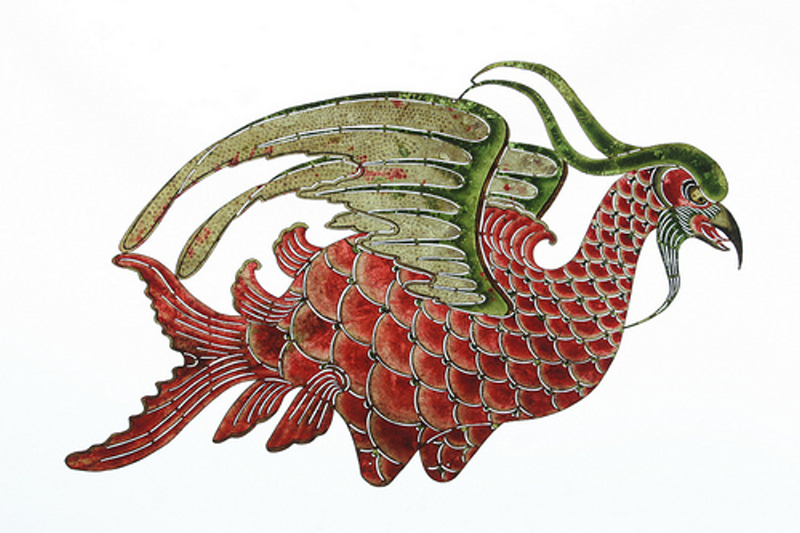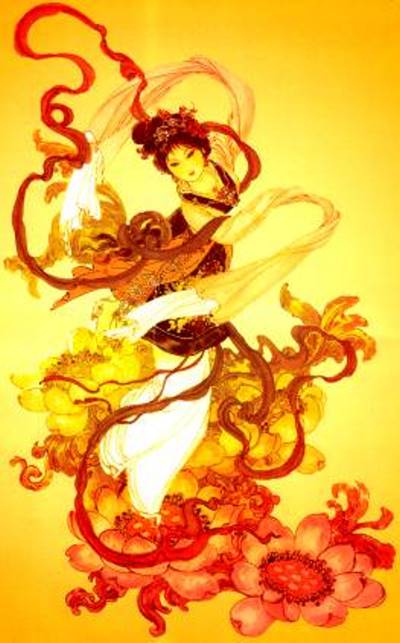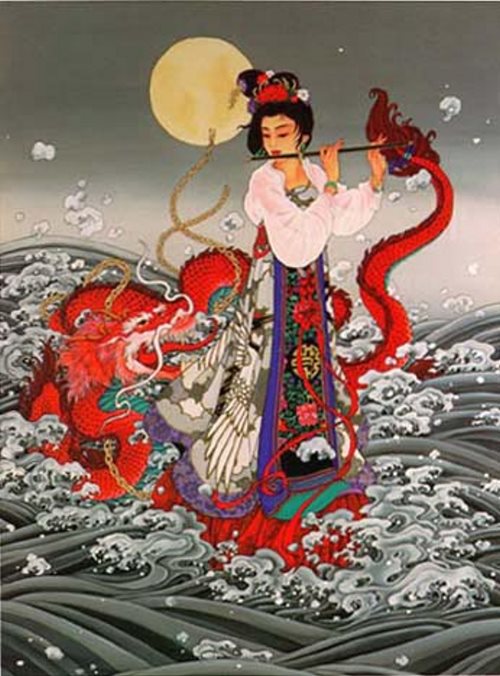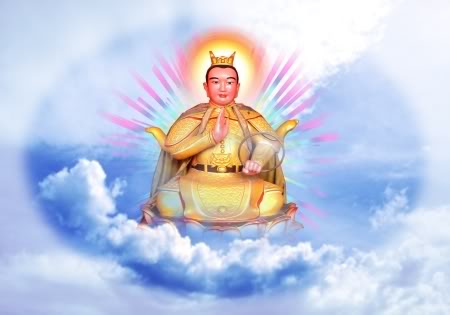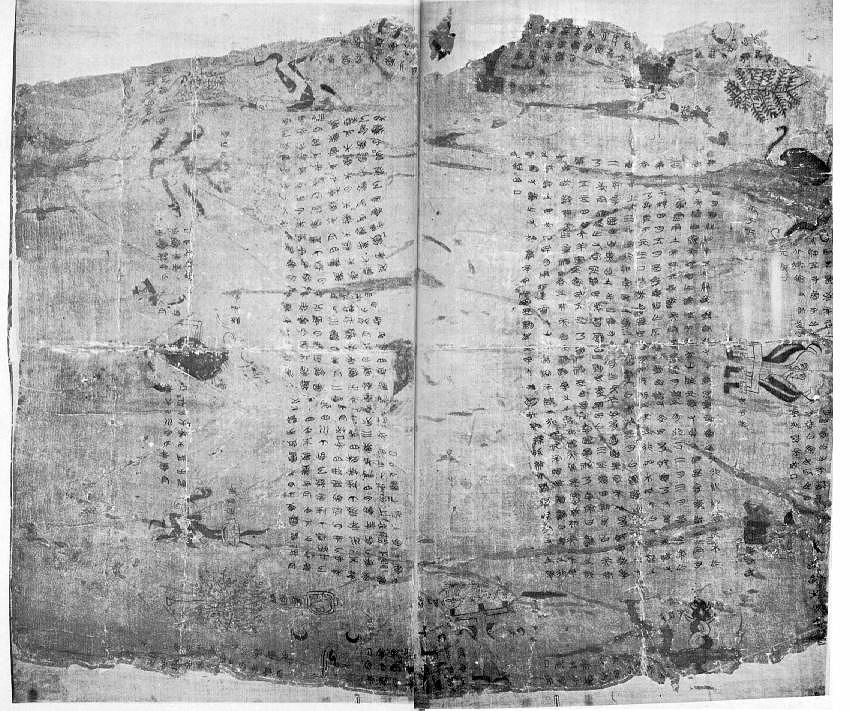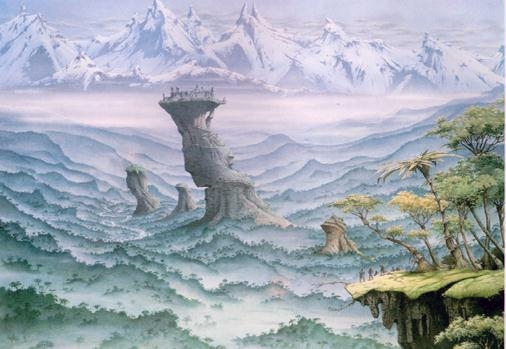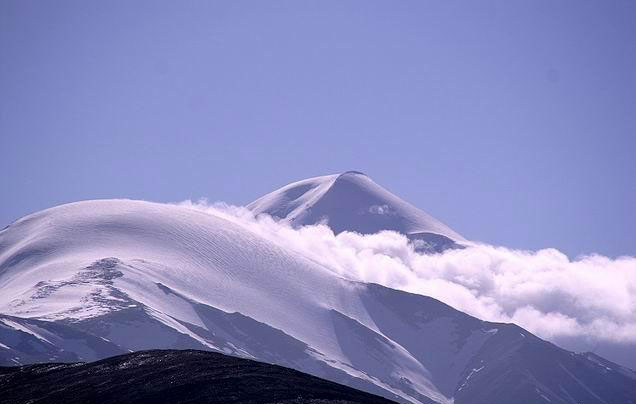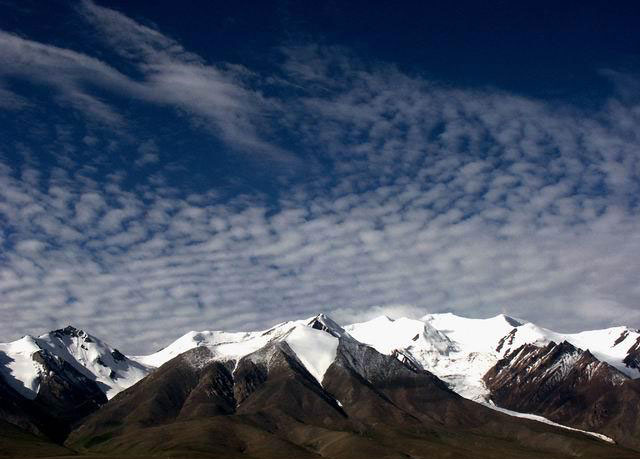|
The Pyramids of China |
||||
|
Tomb of Shao Hao ..
Emporer Shao Hao ..
He is a Supreme god in Chinese mythology. He founded his capital in the east but was later known as the god who reigns over the west and controls the season of autumn. Shaohao (少昊), also known as Shao Hao, Jin Tian or Xuanxiao, was a Chinese emperor in 2600 BC. According to some traditions (for example the Classic of History), he was, in some versions, one of the Five Emperors. Legend says that his mother, a weaver goddess, was a beautiful fairy named Huange who fell in love with the planet Venus while drifting on the Milky Way. The two enjoyed many intimate nights together on her raft and they created a son. She soon gave birth to Shaohao, who grew up to be a handsome young man with a lot of potential. His great uncle, Huang Di, was so impressed with him that he named him God of the Western Heavens. The myth says
that Shaohao created
a kingdom in the five mountains of the Eastern
Paradise that was inhabited
by different types of birds. As the ruler of this
bureaucratic land, he
captured the identity of a vulture. Other birds
worked below him, such
as a phoenix as his Lord Chancellor, a hawk that
delegated the law, and
a pigeon that was in charge of education. He chose
the four seasons of
the year to watch over the remaining birds.
Although his kingdom was successful for many years, he moved back to the west and left his kingdom of birds to his son Chong. With a different son, Ru Shou, he made his home on Changliu Mountain, where he could rule over the Western Heavens. In union as father and son, they were responsible for the daily setting of the sun. In addition, Shaohao was thought to have introduced China to the twenty-five string lute. Source: Wikipedia Shaohao
|
||||
|
..
Qufu (Chinese: 曲阜; pinyin: Qūfù; Wade–Giles: Ch'ü1-fu4) is a city in Shandong Province, China. It is located at 35° 36′ northern latitude and 117° 02′ east, about 130 kilometres (81 mi) south of the provincial capital Jinan and 45 kilometres (28 mi) northeast of the prefecture seat at Jining. Qufu has an urban population of about 60,000, the entire administrative region has about 650,000 inhabitants. Qufu is the hometown of Confucius, who is traditionally believed to have been born at nearby Mount Ni. The city contains numerous historic palaces, temples and cemeteries. The three most famous cultural sites of the city, collectively known as San Kong (三孔), i.e. "The Three Confucian [sites]", are the Temple of Confucius (Chinese: 孔庙; pinyin: Kǒngmiào), the Cemetery of Confucius (Chinese: 孔林; pinyin: Kǒnglín), and the Kong Family Mansion (Chinese: 孔府; pinyin: Kǒngfǔ). Together, these three sites have been listed as a UNESCO World Heritage Site since 1994. Source: Wikipedia Qufu ..
|
||||
Related Links:
|
||||
|
..
Chang'e
Buddist
Dragon Daughter
|
||||
|
..
The Separation of Heaven and the Earth is another well-liked myth in Chinese mythology. This myth was widely spread by numerous ethnic groups such as Han, Miao, Yao, Yi, Naxi, Buyi, and Dulong. In the myth, Zhong and Li broke the connection between heaven and earth. The problem started when Chiyou brought disaster to the common people. This caused the people on earth to start becoming corrupt. Many people began to steal, disobey their faith and violate important oaths. To make a long story short, the Supreme Divinity ordered his deities Zhong and Li to cut the links between heaven and earth. After that, people could on no account come up to heaven again. |
||||
|
The Ancient Chinese are not the only ones to say that silk came from outer space. This is what ancient Khmer (of Cambodia) oral traditions say about the origins of silk: Five female “superhumans” flew down from the sky to earth for no other purpose than to “have fun”. One of them Sota Chan cannot resist the Temptation and steals six good smelling twigs from a poor Chinese Peasant Loem-Sang. After the girls return home to the “heavens” God Indra is enraged by the ladies interference in human affairs and, as punishment, orders Sota Chan to spend six years on earth as Loem-Sangs wife! Sota chan reluctantly (“without hope in her heart”) returned to earth. Surprisingly Loem-Sang is not willing to marry her so she has to persuade him to. She promises to teach him skills and arts that “nobody else here knows”. So he marries her and she teaches him how to weave and process a type of silk “not seen on earth before” and that silk is admired by all. After a year she gets pregnant and gives birth to a child which is “half human, half Demi-God”. His non-human mother gives him the name Preah Pisnokar. The first years of his life he spends eagerly drawing and painting animals, humans and geometrical figures. By the time he is five Sota Chans exile on earth is over and she flies back to the heavens. So how do modern day scholars interpret this story? They say it "symbolically" means that the Sota Chan returned to the Chinese "Emperors Court". Its interpretations bereft of any logic or sense that make me prefer the original ancient sources over those of the modern "scientific community" sometimes. Why would anyone have to "fly" to the Emperors Court? Source: Khmer
Mythology
Found
Artifact:
Source: The Beginnings of Chinese Mythology
|
||||
|
..
In the very ancient time, the sky and the earth were not so far from each other and were connected by ladders. The immortals and deities could go up and down freely and even the ordinary people with magic power could climb up the ladders to complain to the Lord of Heaven. Source: The Ladders to Heaven The focus of
Shanhaijing is also
quite controversial. Some scholars think that it
is a geographic book,
because there are abundant descriptions of various
mountains, seas, rivers,
roads, mines, and local products. Other scholars
argue
Shanhaijing is
commonly referred
to as one of the treasures of Chinese
Source: Handbook-Chinese-Mythology - Scribd - [PDF][Archived] Kunlun Mountain One of the most remarkable mythical mountains in Chinese mythology, Kunlun Mountain is the earthly residence of the Supreme Divinity, a paradise of deities and immortals, one of the pillars of the sky that prevents heaven from collapsing, and a sky ladder that links the earth to heaven. Descriptions about the mystery, grandeur, or magnificence of Kunlun Mountain in ancient writings are indeed abundant. The renowned Zhou dynasty poet Qu Yuan sketchily depicted it in his inquisitive poem “Tianwen.” Among those various descriptions, one of the earliest and most comprehensive depictions comes from Shanhaijing. In a text from that volume (chapter 11), Kunlun was said to be a huge mountain located in the northwest. It was the earthly residence of the Supreme Divinity and the dwelling of other gods. It was 800 li (400 kilometers, or 248 miles) square and 80,000 feet high. On the summit were nine wells, nine gates, and magic grain. The balustrades of the wells were made of jade. The gates were all guarded by the divine beast Kaiming (“Enlightened”), which looked like a big tiger with nine heads and human faces. The magic grain, named Muhe (literally meaning “Tree Grain”), was forty feet tall and five spans wide. To the west of Kunlun Mountain were phoenixes that wore snakes on their bodies and stepped on snakes. To the north of the mountain were the Pearl Tree, the Jade Tree, the Tree of Immortality, Tree Grain, the Sweet Spring, and Shirou (meaning “Seeing Flesh”). Source: Handbook-Chinese-Mythology - Scribd - [PDF][Archived] Mythology The Kunlun mountains are believed to be the paradise of Taoism. The first to visit this paradise was, according to the legends, King Mu (976-922 BCE) of the Zhou Dynasty. He supposedly discovered there the Jade Palace of Huang-Di, the mythical Yellow Emperor and originator of Chinese culture, and met Hsi Wang Mu (Xi Wang Mu) , the 'Spirit Mother of the West' usually called the 'Queen Mother of the West', who was the object of an ancient religious cult which reached its peak in the Han Dynasty, also had her mythical abode in these mountains. Source: Wikipedia Kunlun Mountains Mythology A World Tree spanning heaven is attested in Chinese lore as well, this despite the fact that a series of infamous book-burnings destroyed the vast majority of early mythological texts. In Chinese cosmology, as Michael Loewe documented, the World Tree was associated with the center of the world: “The concept of the cosmic tree which forms the centre of the world may be traced in Chinese literature from the Chan-kuo period, in various guises. Sometimes it appears as a single tree, such as the Fu-sang or the Jo-mu; later it is known as the beautiful tree whose growth stems from a pair of trunks, the Mu-lien-li. At times the tree is conceived as connecting the three worlds of heaven, earth and the Yellow Springs; and as such it may be compared to the ladder by means of which Fu Hsi and his sister ascended to heaven. As the Fu-sang, the concept embraces the tree up which the sun climbs and descends, once daily.”43Elsewhere in China the World Tree was known as Jianmu. Located at the center of the world, the Jianmu tree formed a ladder reaching to heaven: “In the wilderness at Dukuang in the southwest was a heavenly ladder coming from a tree called Jianmu. Jianmu’s tall branches reached into the clouds, and the top branches circled and entwined in the shape of an umbrella. The Jianmu heavenly ladder was thought to have been in the center of the world, and it was here that the gods climbed between heaven and earth.”45Source: The Ladder-to-Heaven - [PDF][Archived] |
||||
|
Linked with the Shambhala Heart Light ..
The Kunlun Mountain/Volcano is located in Tibet. Its volcanic group contains 70 pyroclastic cones and basaltic lava flows. Kunlun is not only famous for its grandeur but also the color of jade it produces, and the jade is called Kunlun Jade. Among the snow and the grassland, rare animals are leaping and skipping, presenting a beautiful picture of nature. Taoist cosmology recognized five sacred mountains, one for each of the cardinal directions and for the center. Kunlun is the mountain in the middle, the empty center that is the spinning axis of the Taoist Universe. In Keeping with Taoist philosophy, this center was a point that was nowhere and everywhere at the same time. For millennia, Kunlun Mountain traveled freely from one part of China to another, its geographic placement conveniently shifting as the centers of Chinese civilization moved from one province to another. But at the end of the nineteenth century, when Christian missionaries arrived in China, Kunlun Mountain finally settled down to a fixed location on a map – most likely because the missionaries succeeded in convincing the Chinese that mountains do not move and a center can only be at one place at one time. An Etheric Kunlun Mountain still exists. Shrouded in mists and dappled with shining groves of tea trees and gardenia flowers, this mountain continues to move from place to place and appears and disappears in dreams . . . (sounds a lot like Shambhala, doesn’t it?). This Kunlun Mountain is the mythical Taoist paradise. Deep below the surface of the earth, its caves and labyrinths burrow to the earth’s core of fiery rivers. To the ancient Chinese, high mountains were shrouded in mystery. They were unknown and unpredictable, their harsh and fickle weather conditions making them dangerous and inaccessible to all but the bravest adventurers. Mountains became symbolic of what lay beyond the veil of the visible world. Since the highest, most imposing were regarded as sacred, temples and shrines were built in their sheltered canyons, and stories and legends were told about the mystical occurrences that happened on their slopes.
Kunlun Mountains slipped easily back and forth between the world of matter and the world of dreams. The ancient Chinese regarded the mountain as the center of the world, the umbilicus of the universe, the connecting link between heaven and earth. Over centuries, Kunlun Mountain became a symbol for the unknowable wholeness of Tao, reflected in the unknowable mystery of the self. The paths along the mountain came to represent the paths we follow through life, the path of our destiny. The mountain is our Being, the connecting link between our body, our spirit, our mind and our soul. The labyrinths below the mountain represent the primal, instinctual wisdom of our bodies while the North Star which shines at the mountaintop represents the speck of spirit whose light guides our journey from birth through life and back to our original source. Kunlun Mountain is a paradox. It exists both in and out of the world we know as real. At the point of intersection of the four directions the mountain is the unknowable empty center, the self that connects each of us to the whirling mystery of Tao. Is it any wonder that Kunlun Mountain is one of our Intuition Mountains?
Source: Kunlun Mountain Heart Light |
||||
| FAIR USE NOTICE: This page contains copyrighted material the use of which has not been specifically authorized by the copyright owner. Pegasus Research Consortium distributes this material without profit to those who have expressed a prior interest in receiving the included information for research and educational purposes. We believe this constitutes a fair use of any such copyrighted material as provided for in 17 U.S.C § 107. If you wish to use copyrighted material from this site for purposes of your own that go beyond fair use, you must obtain permission from the copyright owner. | ||||
|
|
